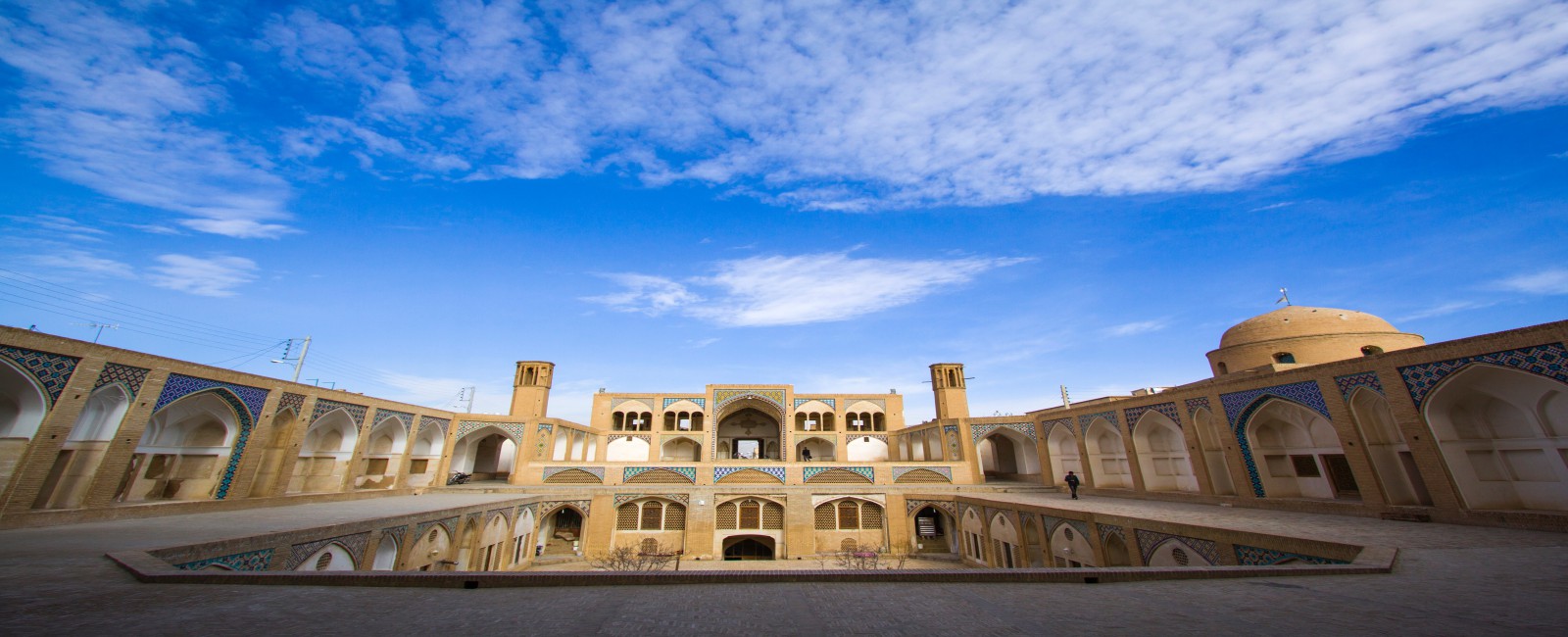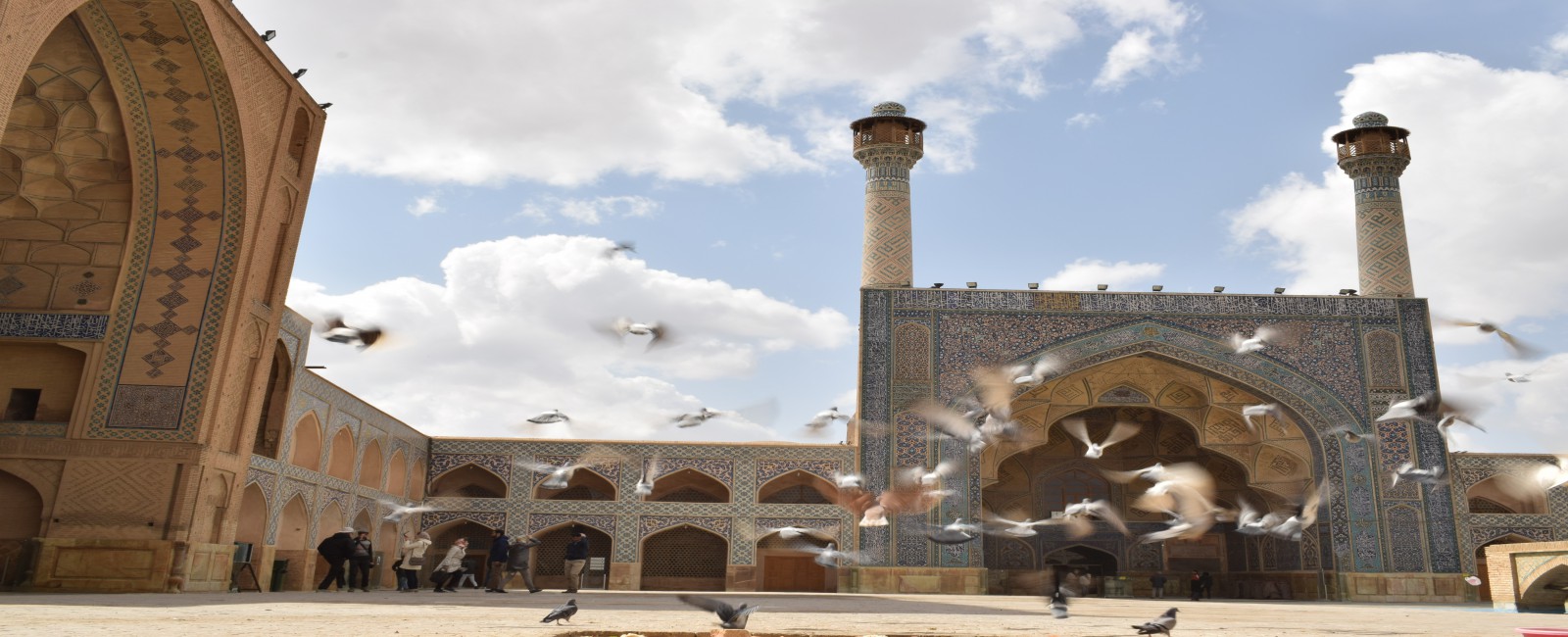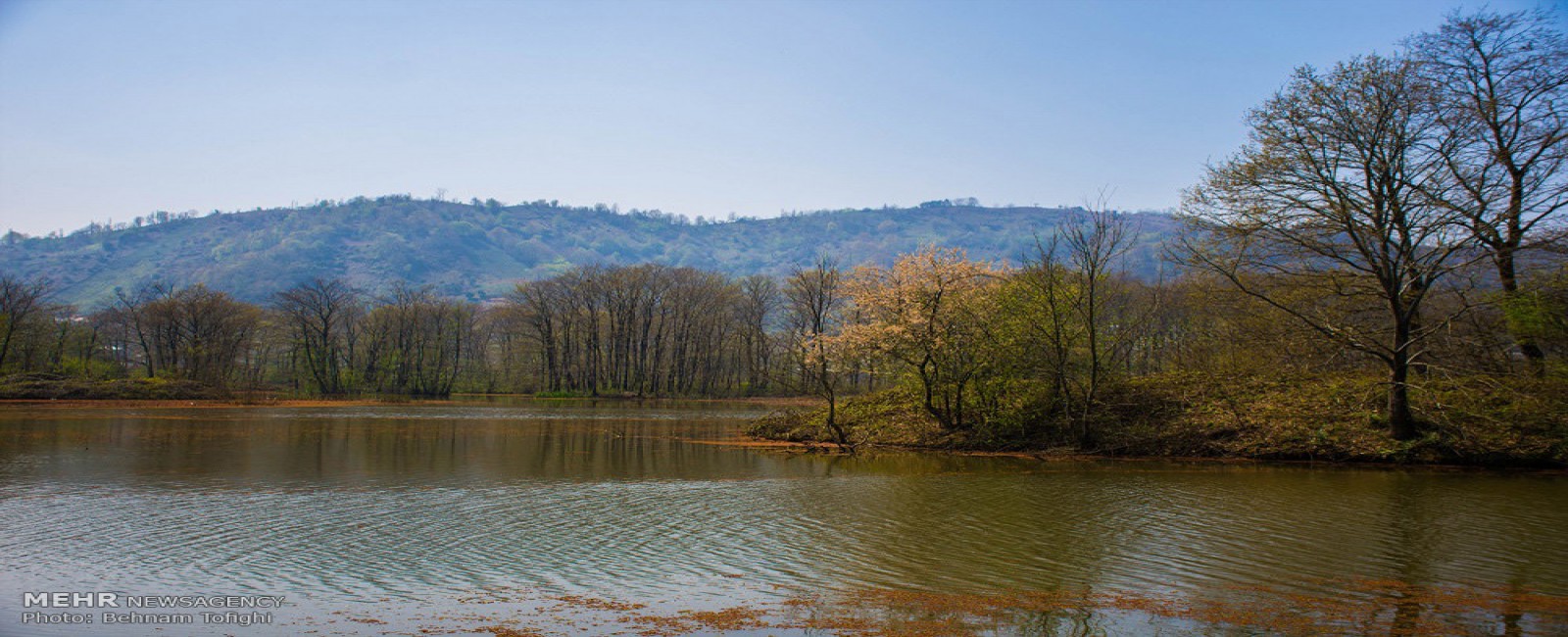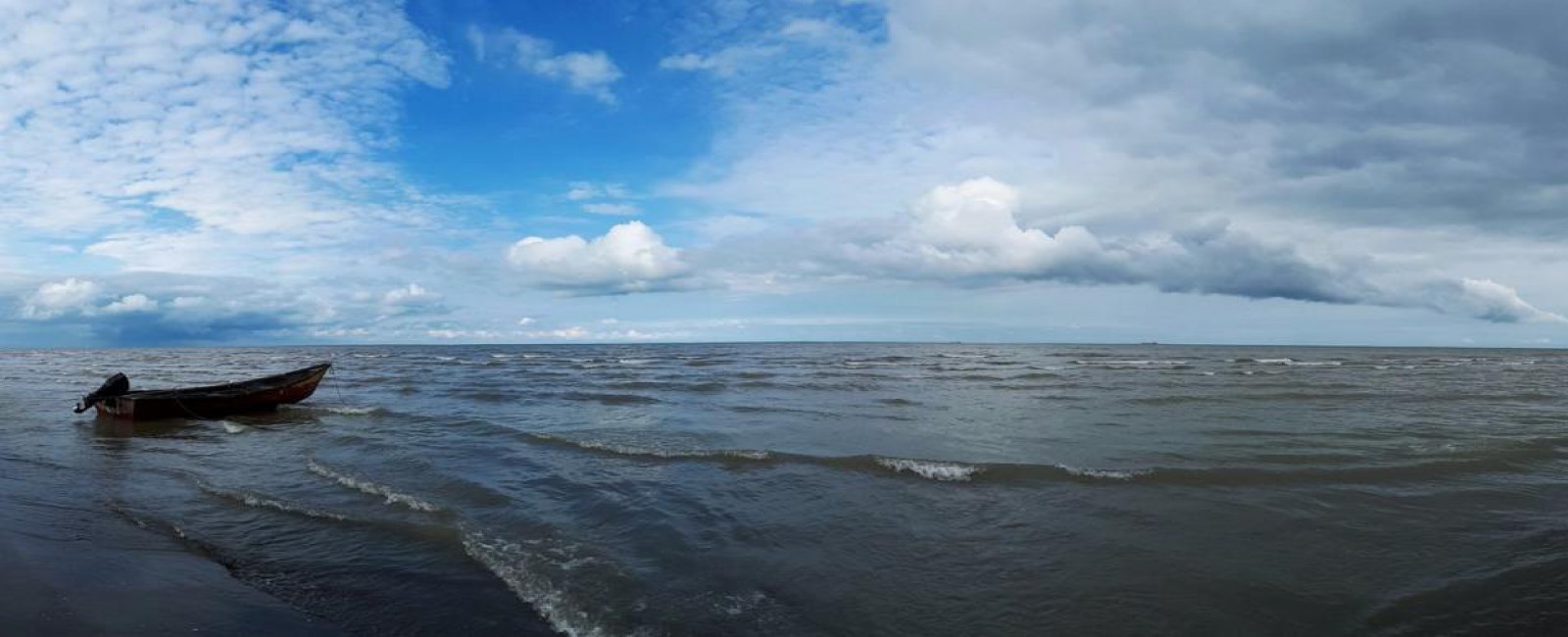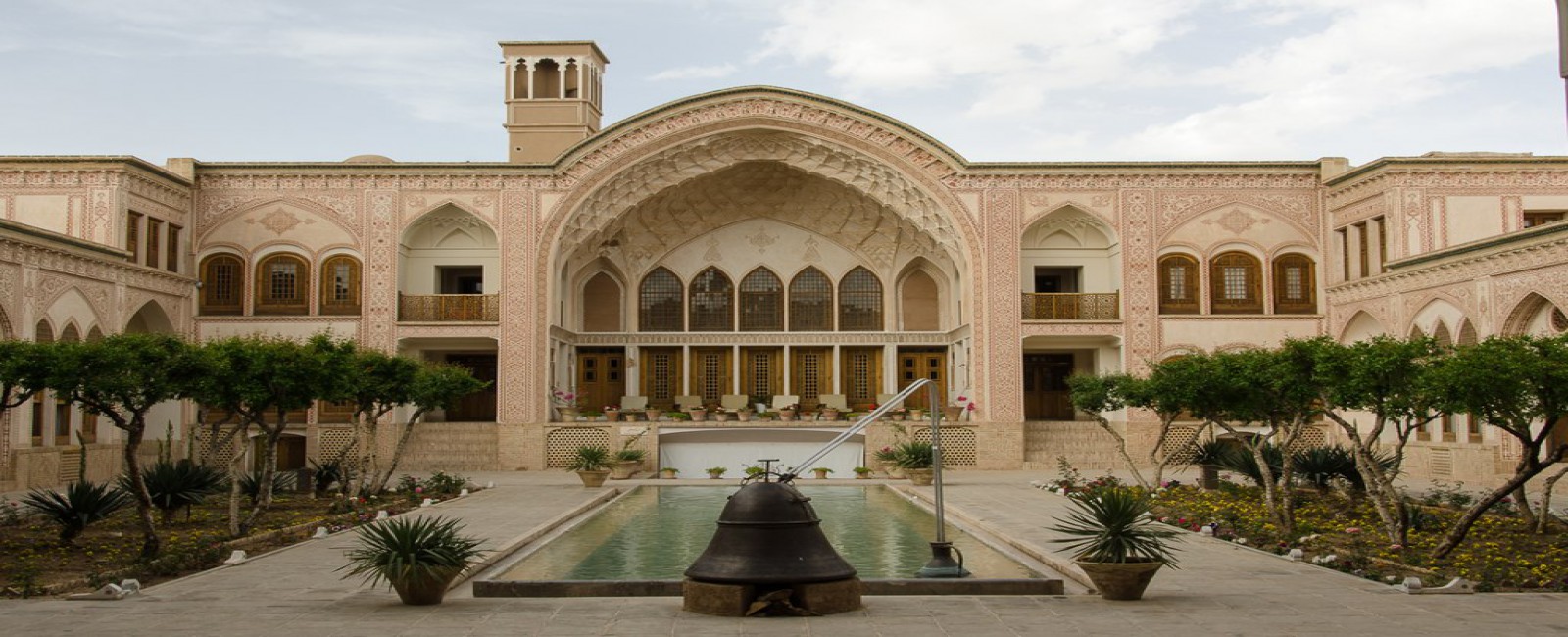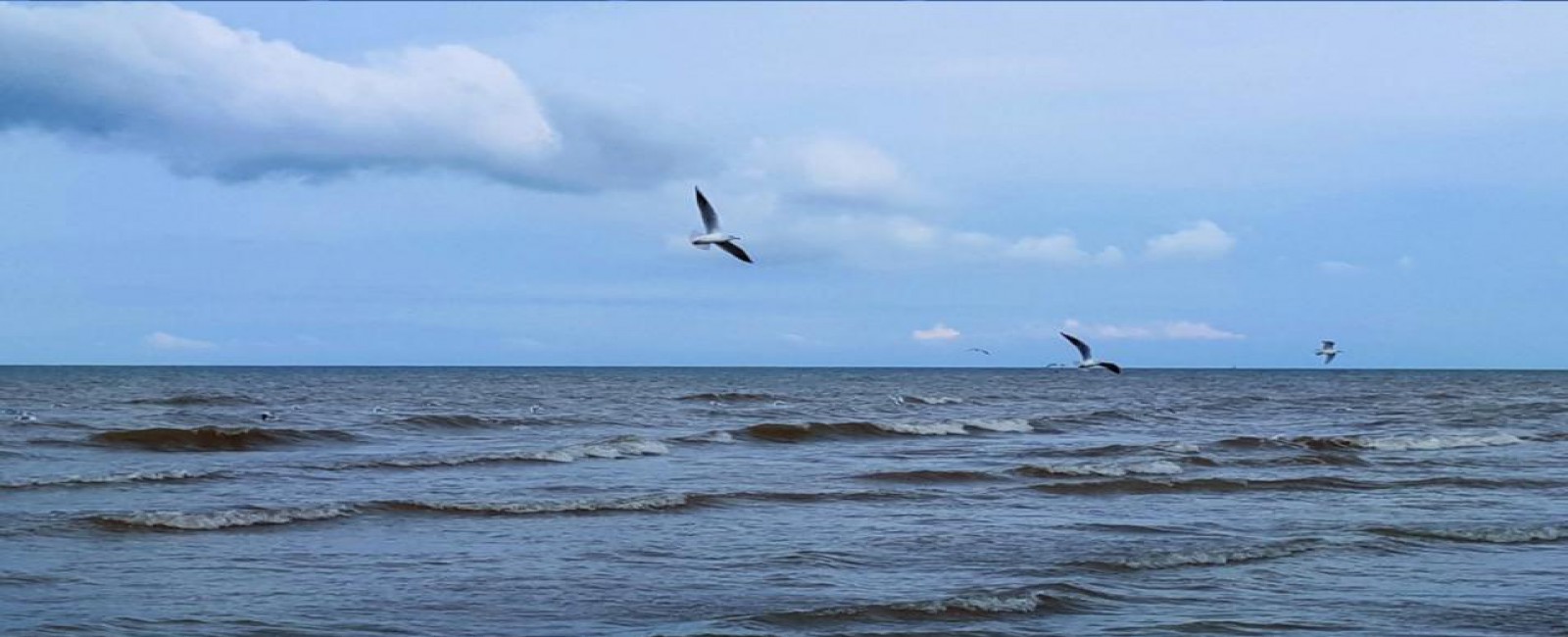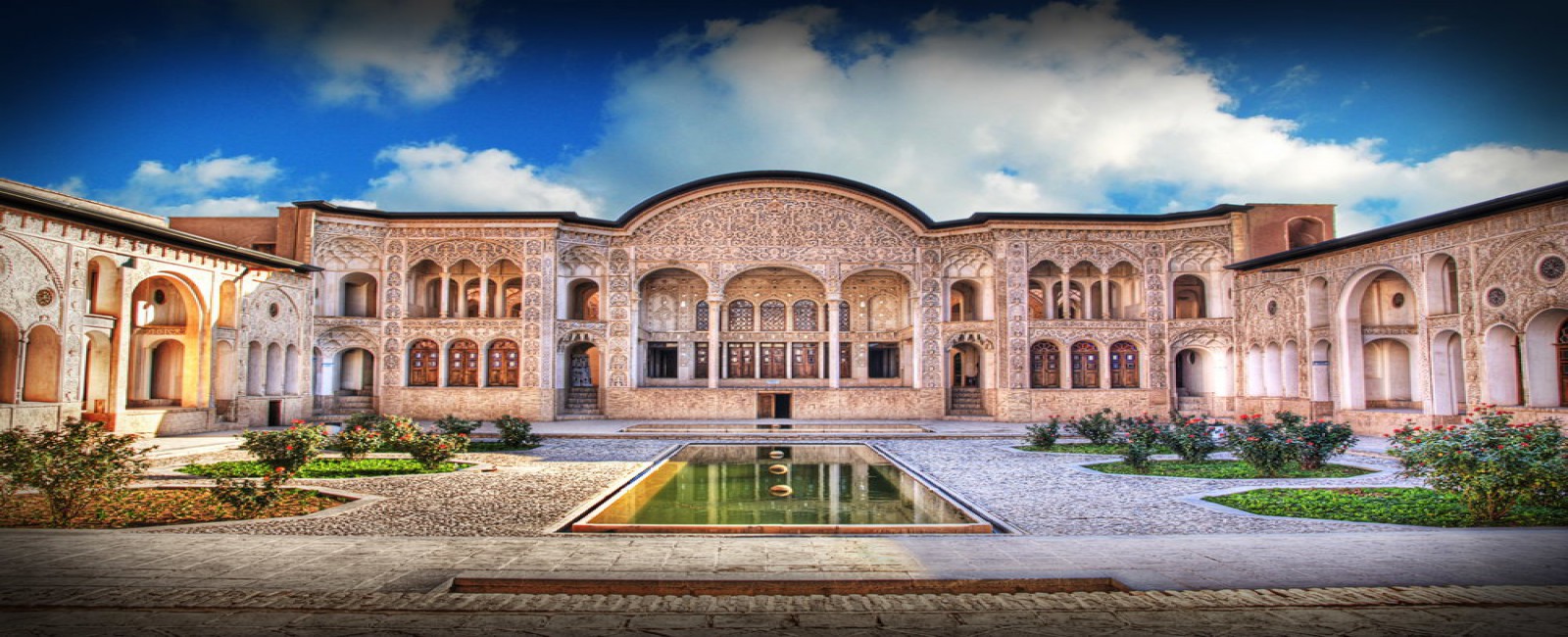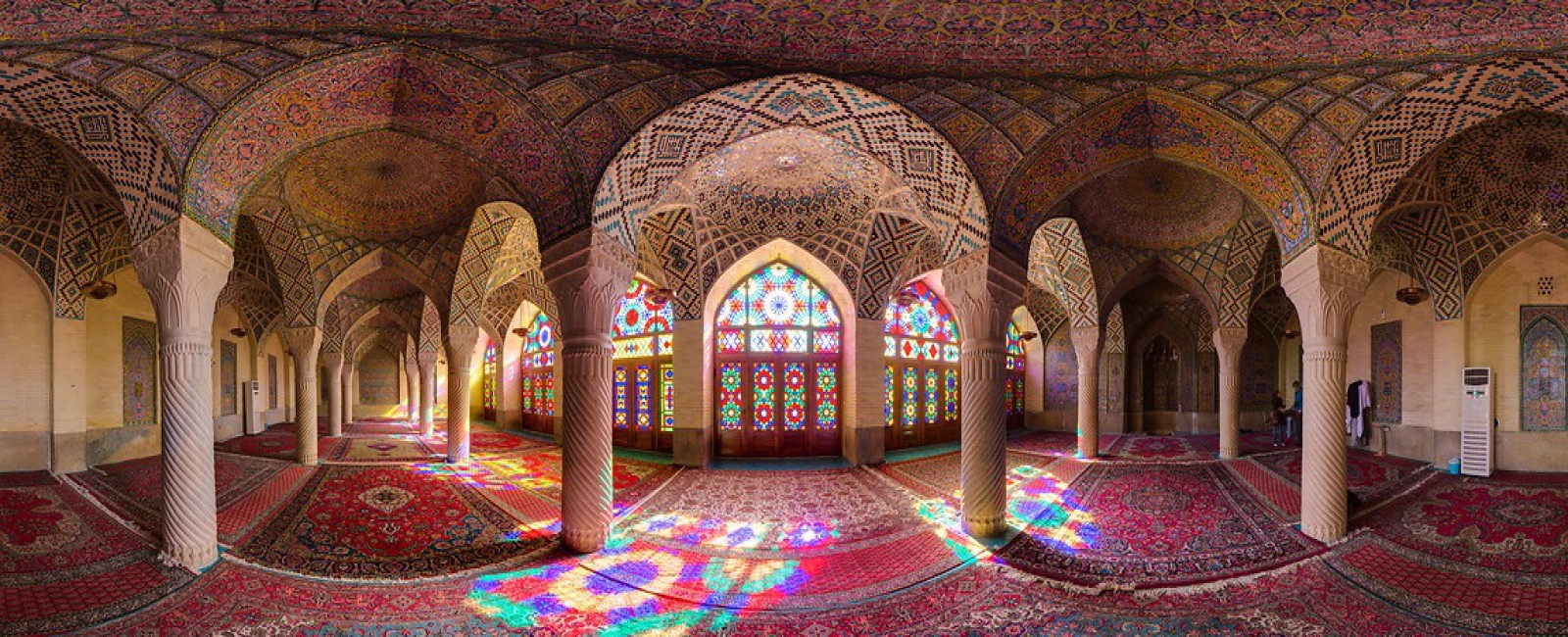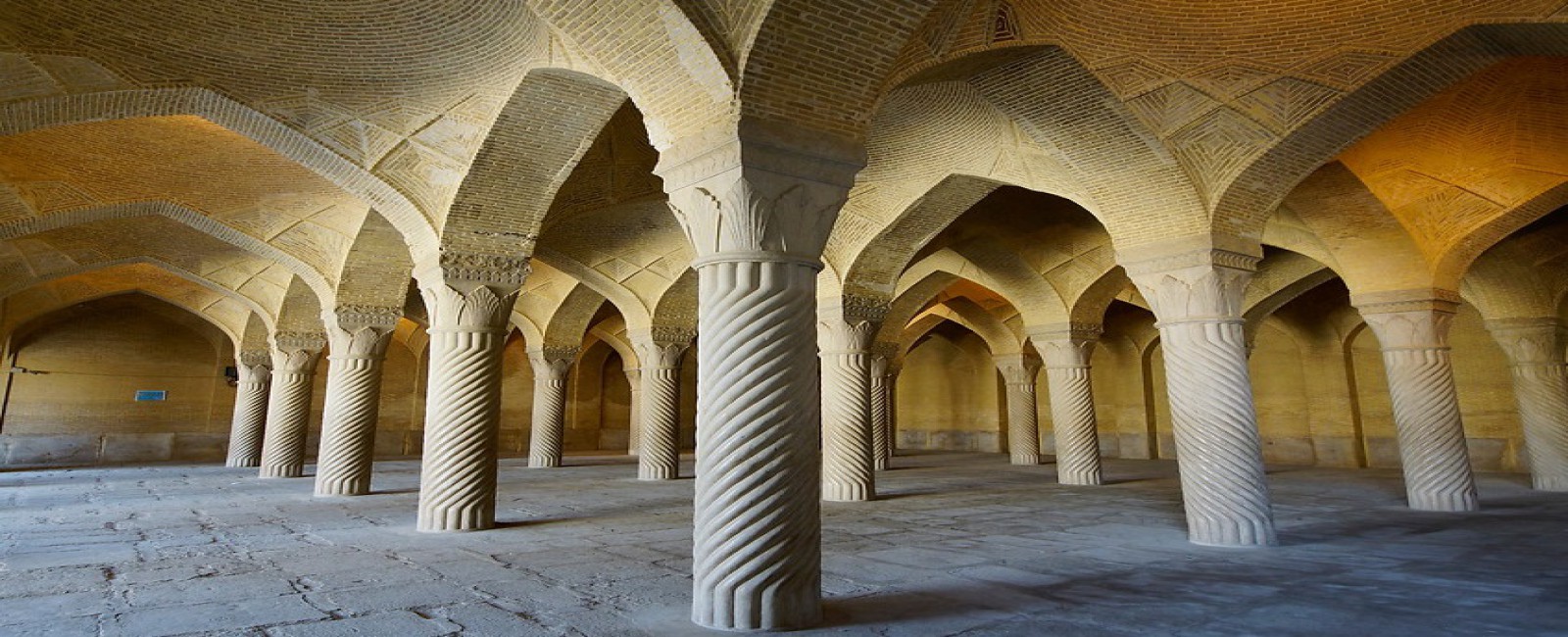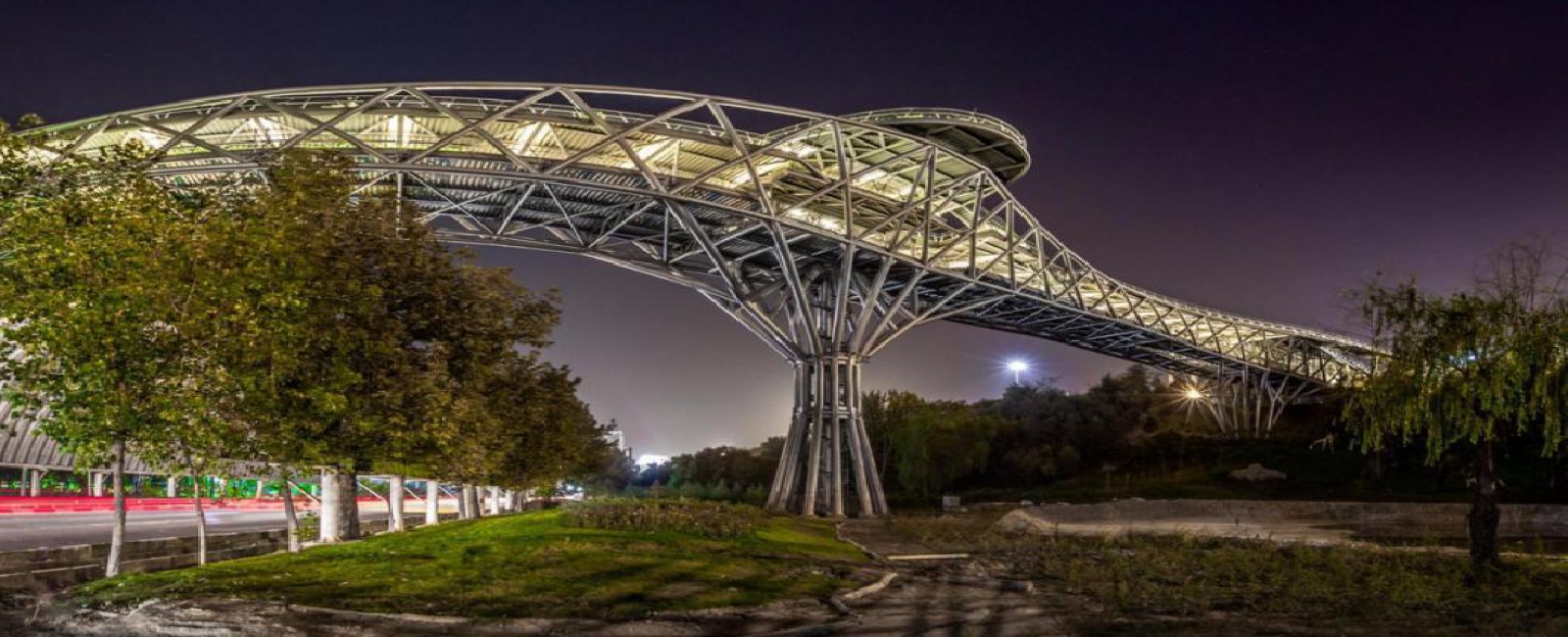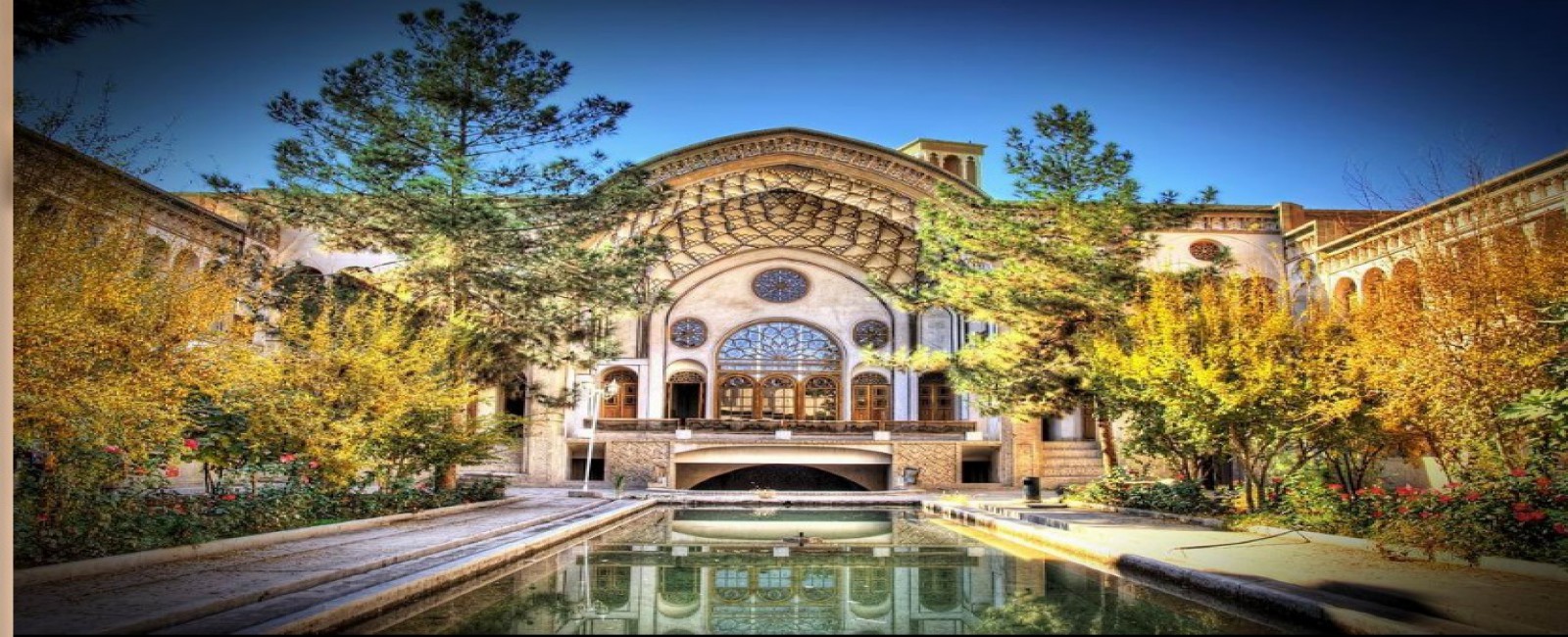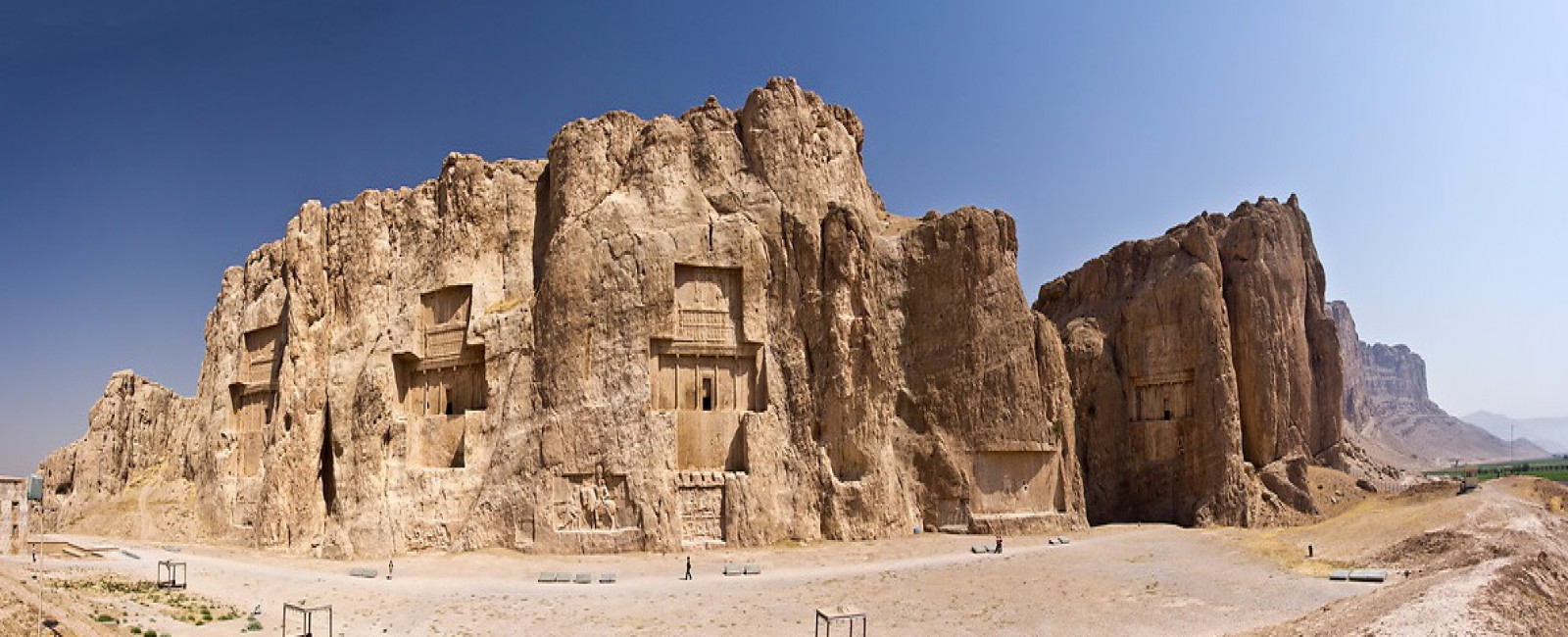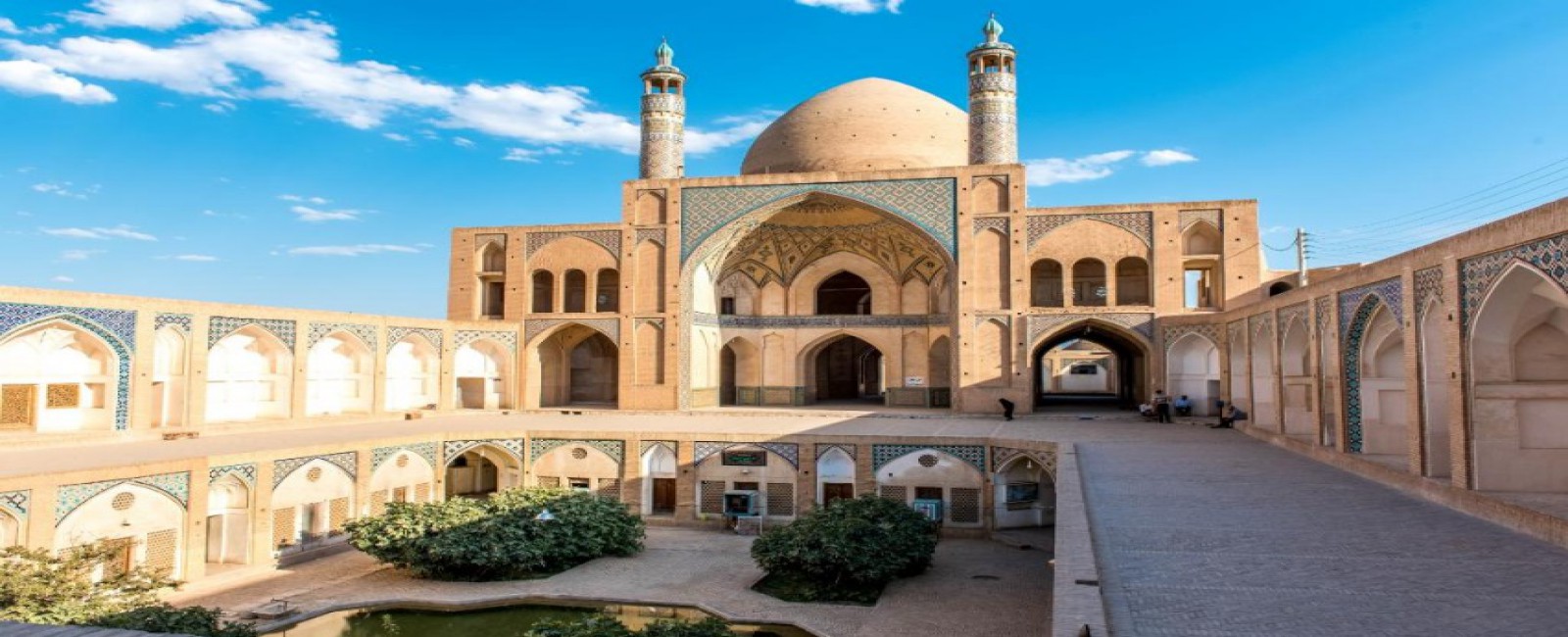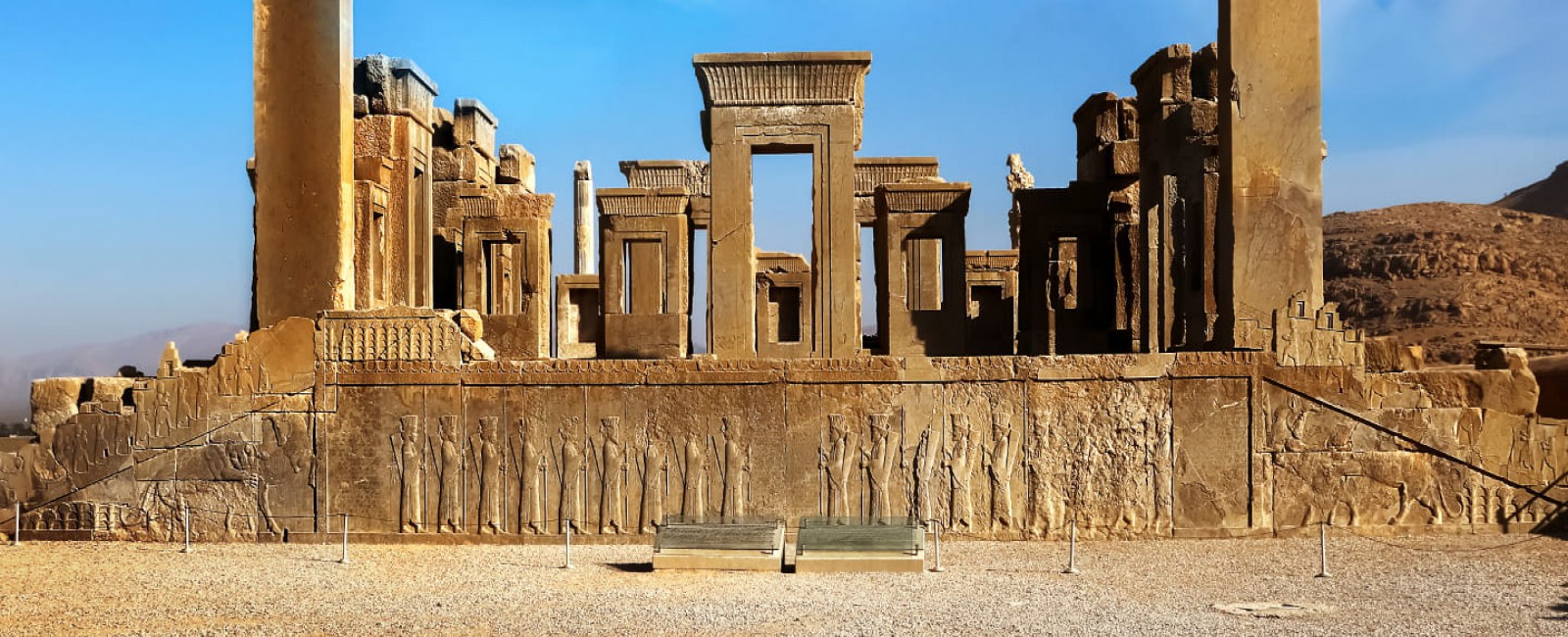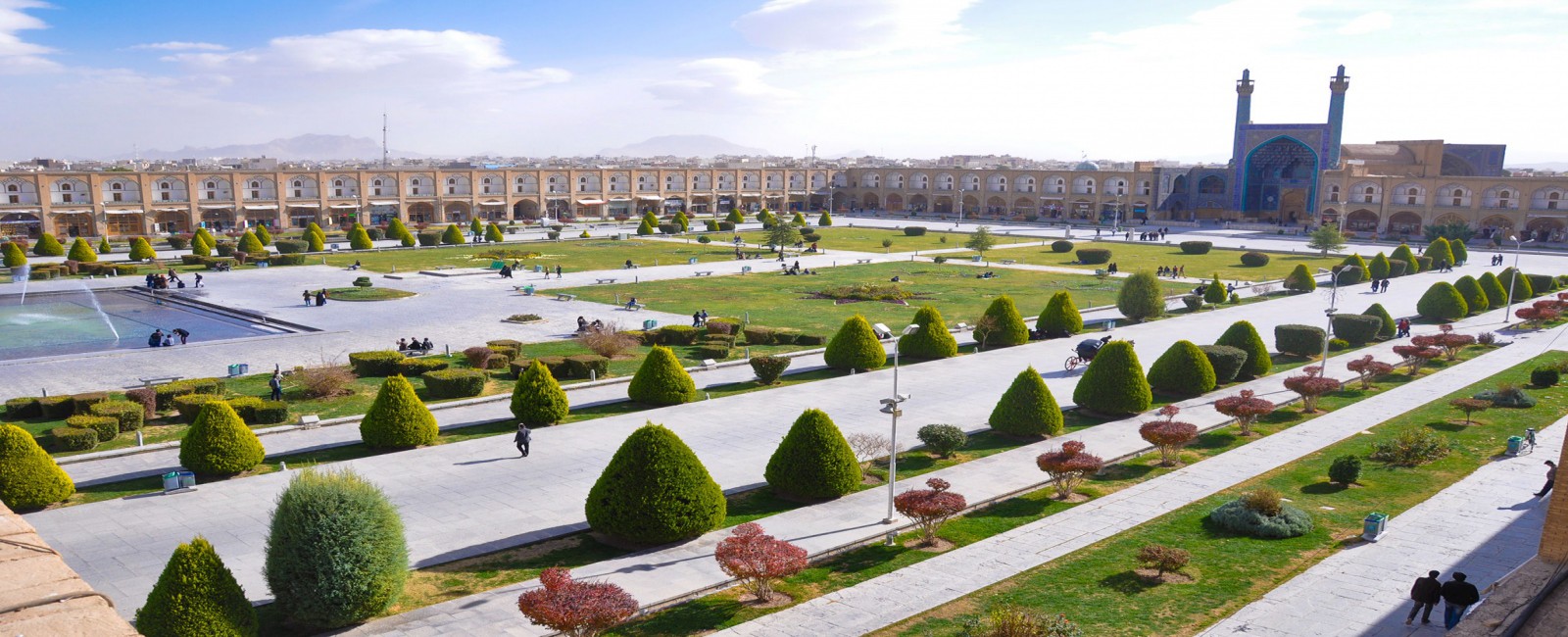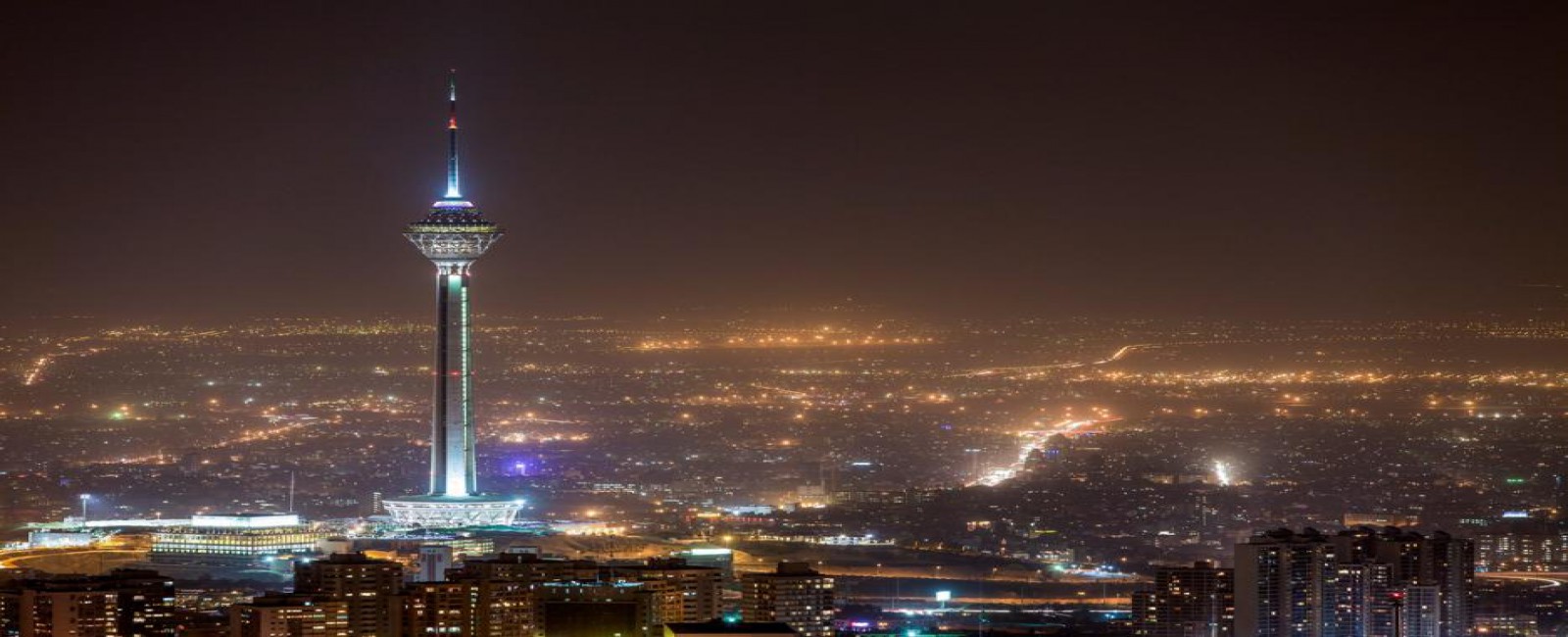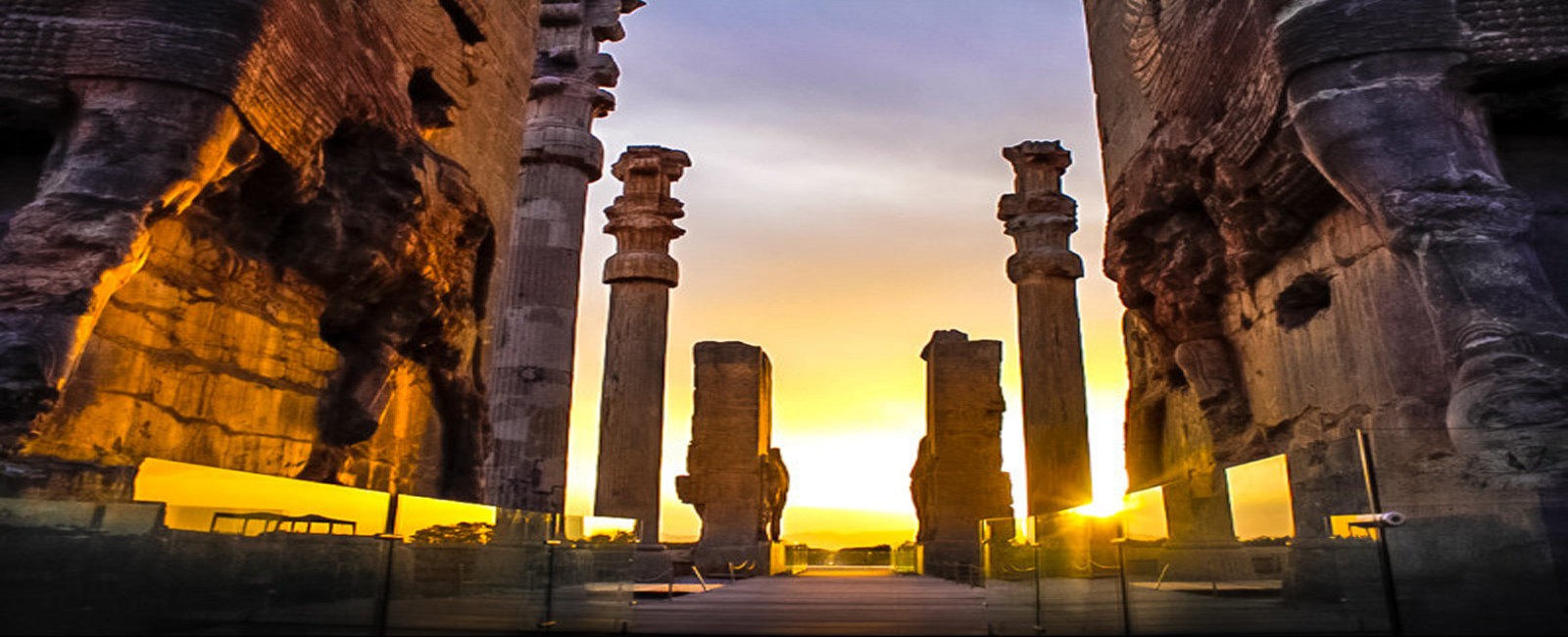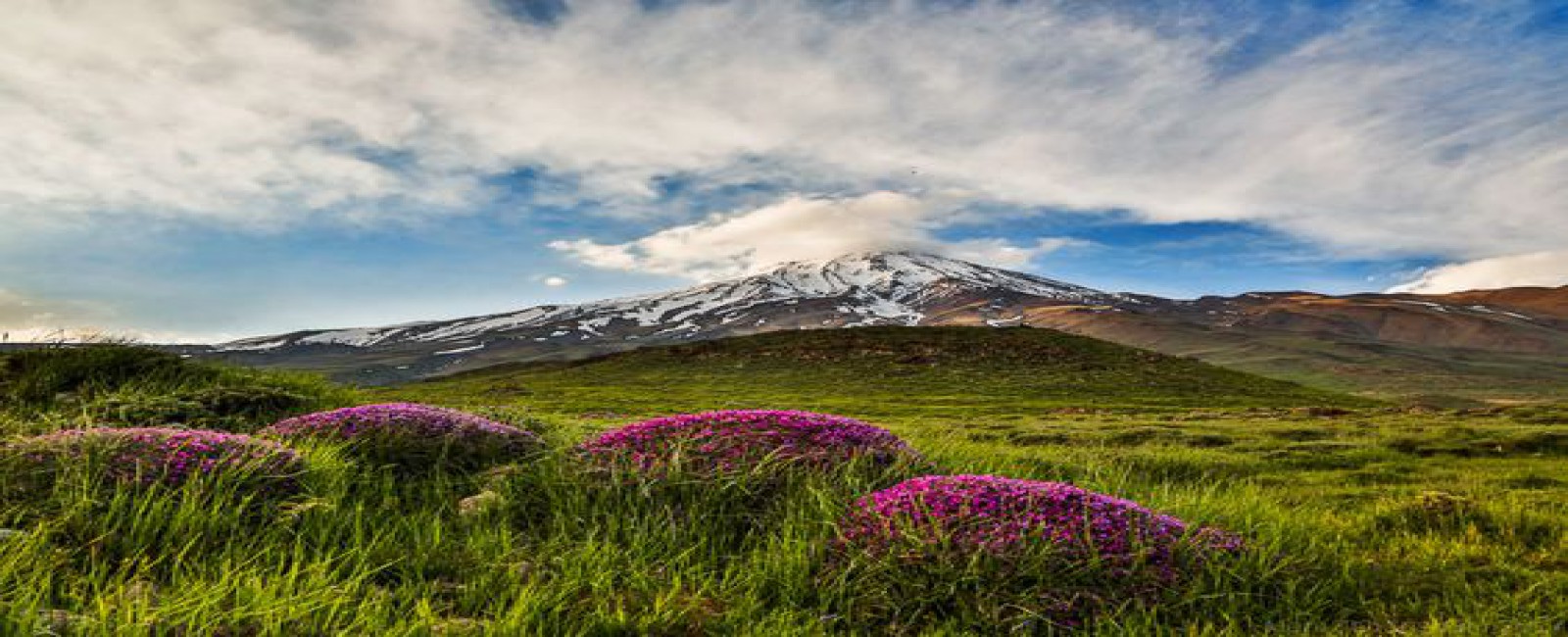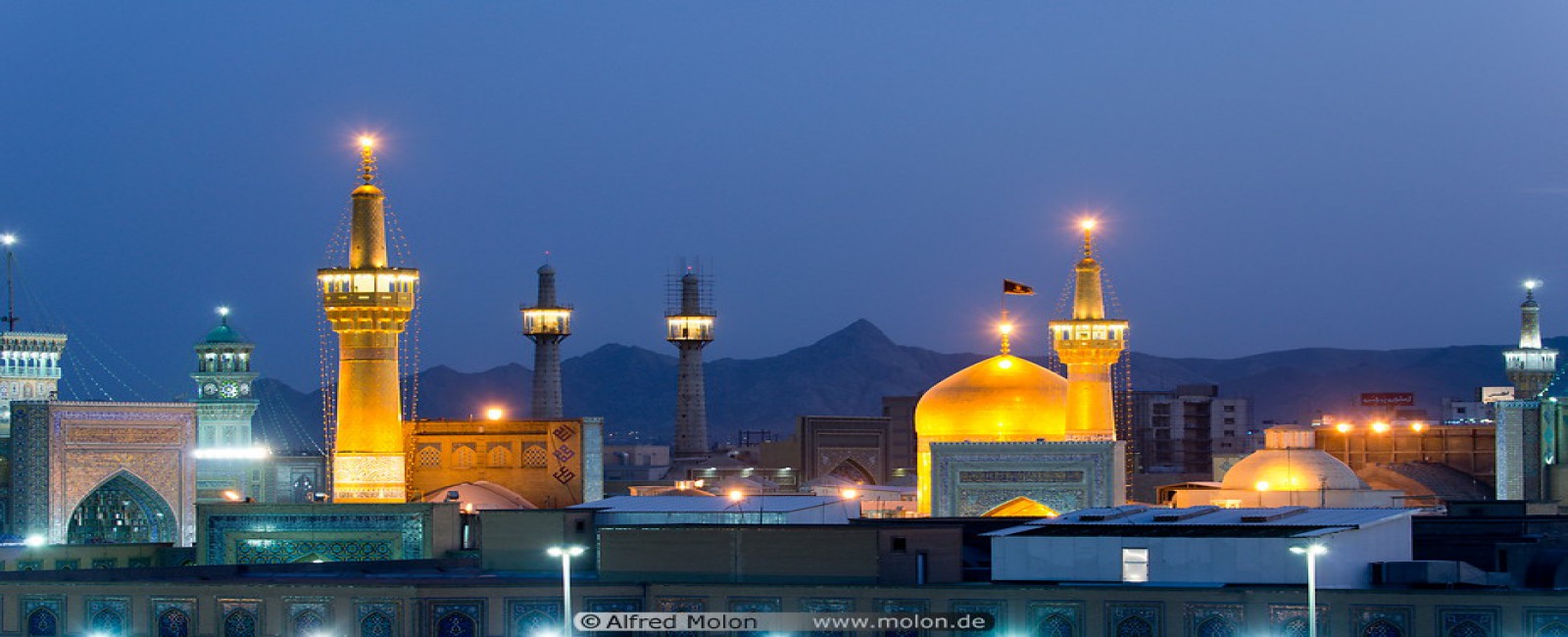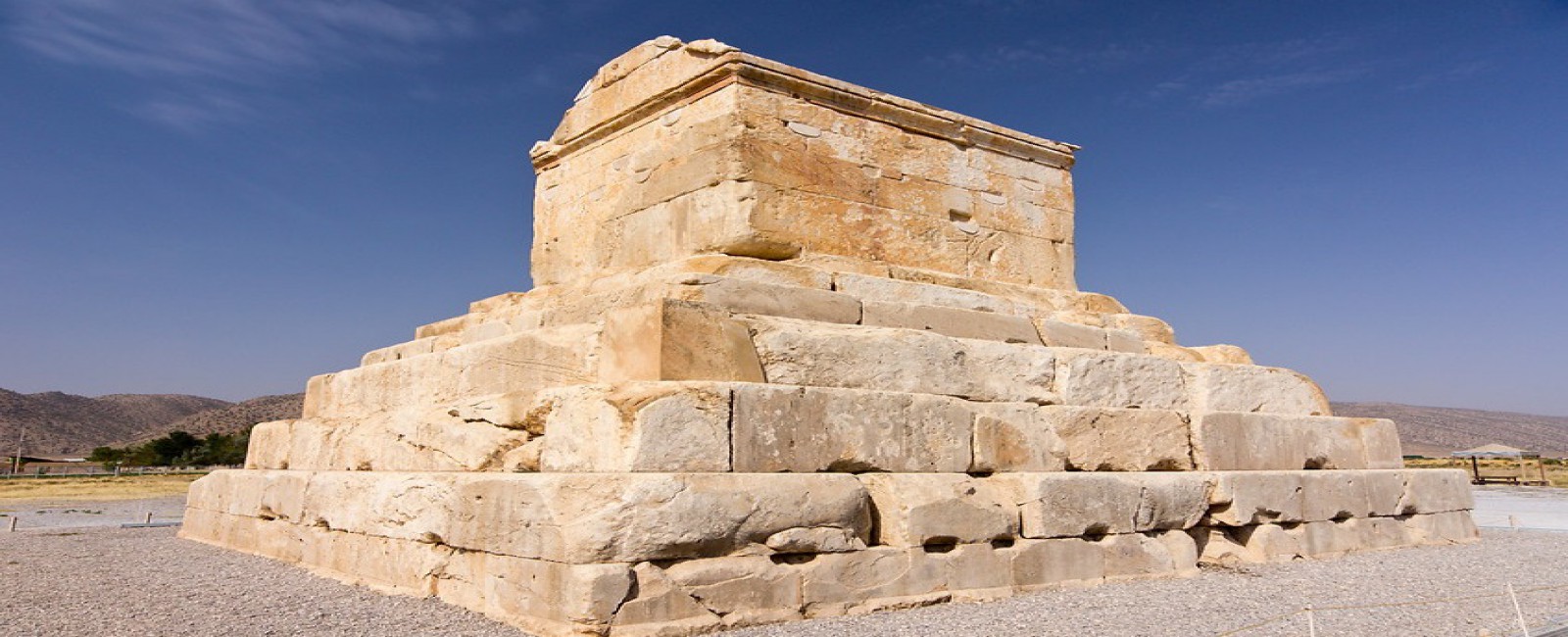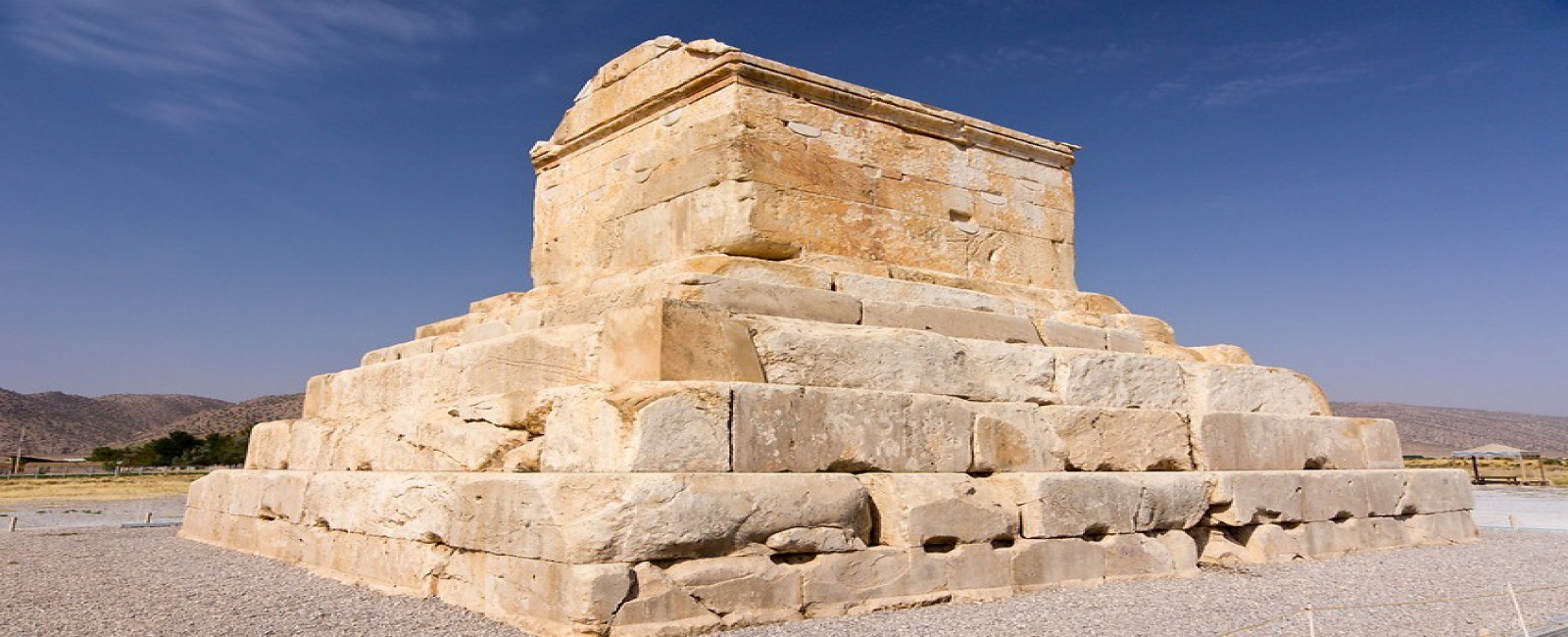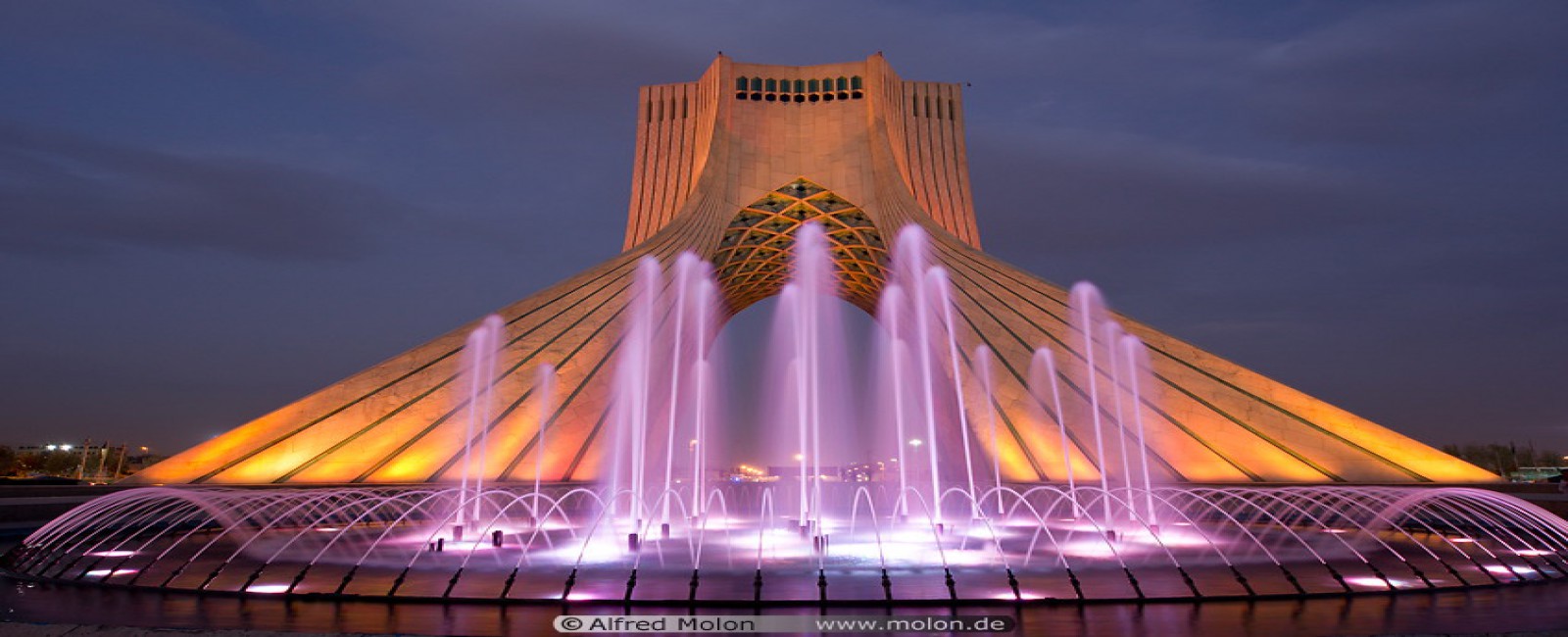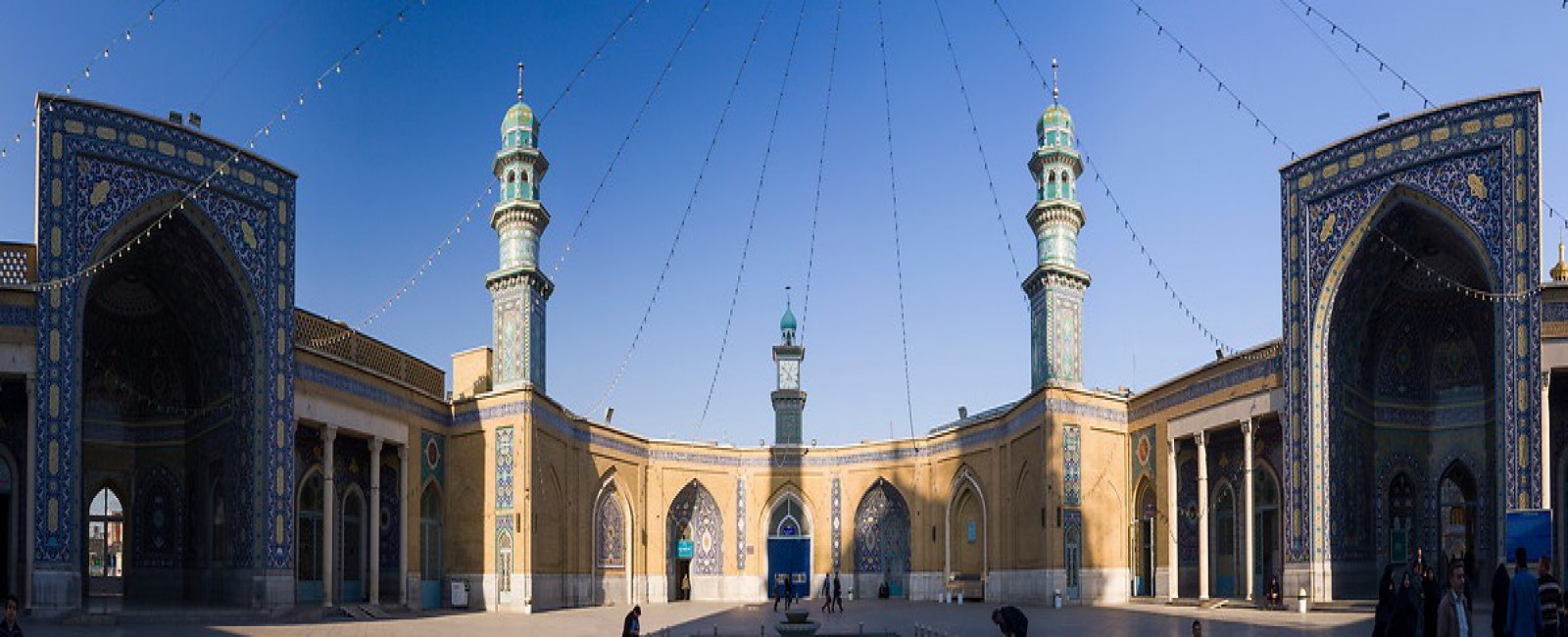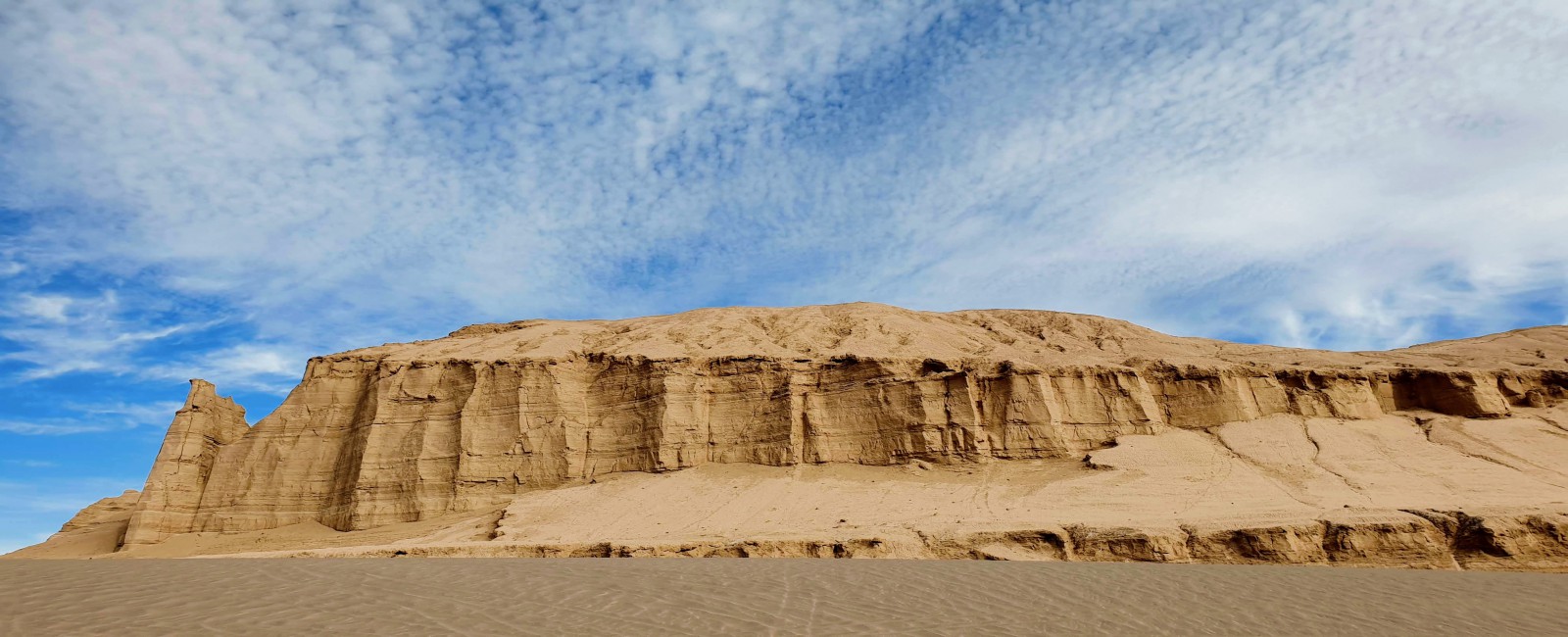Baq-e-Shahzadeh Mahan Edifice, Kerman

The above mentioned is located at a distance of 6 km. from Mahan, and was constructed under the orders of the governor of Kerman. This structure is related to the late Qajar period. Built in the traditional style, and is a garden with pools in a terraced fashion.
Bam Citadel, Bam

To the north east of the Bam city, in the skirts of a gigantic rock is the foundations of a fortified castle, reputedly known as the Bam Citadel. This citadel was actually the old city of Bam. The city comprised of four sections and 38 watch towers. In the southern side of this structure there were four ramparts and to the north-eastern section there was also another colossal rampart. The citadel has been constructed of sun baked bricks, argyle and straw, but in some parts stone, brick and the barks of date palms have been utilized. The said citadel comprises of the entrance gate-way, a public sector, a military base and the central section or seat of power.
The public dwellings were constructed alongside the elevated areas and on the ground level. Regarding the city construction planning its a complete aggregate. Its distinguished areas are the main passage or bazaar, Hosseiniyeh (or place for public religious rituals and mourning), mosque (fire-temple), gymnasium for traditional sports, public bath and a religious sector pertaining to the Jews. Most of the common houses were constructed in such a manner that they were connected to each other and usually had interconnections. In some houses, private baths are seen. A few of these buildings are two storeyed structures which were most probabely constructed due to increased population.
After the gateway entrance there is a main passage which leads to the second gate-way. A part of this route was the city bazaar. Remenance of a bakery, an oil extraction area and the mud made shelves of bazaar reveals the splendour of the city in that time. Running parallel to the main passage there were two other paths leading to the second gateway. The Hosseiniyeh or place for religious mourning comprised of a large area with a two storeyed symmetrical porch, a few chambers and three pulpits of sun baked bricks. The traditional gymnasium consisted of four porches, a dome and a low-lying area, surrounded by a higher platform.
The Bam citadel has two mosques, one is the Jame' Mosque and the other the Hazrat Mohammad (AS) Mosque. There was also used to be a public bath in public section, which is unfortunately in a ruined state at present. After the second gate-way are the stables, rampart and the sentry picket. The third gate-way led to the garrison, the commanders residence and a wind mill. In the midst of the citadel, a three storyed edifice remains which was used to be the seat of the ruling power. Alongside this structure was a private bath of the commander, and a drainage conduit. This citadel was constructed by Bahman Esfandiyar, and dates back to the pre-Islamic period. The Bam Citadel has undergone several repairs.
Unfortunatly Bam Castle had been ruined in an earthquake in Dec.2003. But it is going to reconstruction by people, Government and International Organizations.
The public dwellings were constructed alongside the elevated areas and on the ground level. Regarding the city construction planning its a complete aggregate. Its distinguished areas are the main passage or bazaar, Hosseiniyeh (or place for public religious rituals and mourning), mosque (fire-temple), gymnasium for traditional sports, public bath and a religious sector pertaining to the Jews. Most of the common houses were constructed in such a manner that they were connected to each other and usually had interconnections. In some houses, private baths are seen. A few of these buildings are two storeyed structures which were most probabely constructed due to increased population.
After the gateway entrance there is a main passage which leads to the second gate-way. A part of this route was the city bazaar. Remenance of a bakery, an oil extraction area and the mud made shelves of bazaar reveals the splendour of the city in that time. Running parallel to the main passage there were two other paths leading to the second gateway. The Hosseiniyeh or place for religious mourning comprised of a large area with a two storeyed symmetrical porch, a few chambers and three pulpits of sun baked bricks. The traditional gymnasium consisted of four porches, a dome and a low-lying area, surrounded by a higher platform.
The Bam citadel has two mosques, one is the Jame' Mosque and the other the Hazrat Mohammad (AS) Mosque. There was also used to be a public bath in public section, which is unfortunately in a ruined state at present. After the second gate-way are the stables, rampart and the sentry picket. The third gate-way led to the garrison, the commanders residence and a wind mill. In the midst of the citadel, a three storyed edifice remains which was used to be the seat of the ruling power. Alongside this structure was a private bath of the commander, and a drainage conduit. This citadel was constructed by Bahman Esfandiyar, and dates back to the pre-Islamic period. The Bam Citadel has undergone several repairs.
Unfortunatly Bam Castle had been ruined in an earthquake in Dec.2003. But it is going to reconstruction by people, Government and International Organizations.
Vakil Traditional Tea House or Bath, Kerman

The said bath was constructed in unique style and adorned just as skillfully in the year 1280 AH . Its architecture being relative to the Zandiyeh-Qajar reigns. Its walls and floorings are finished in ceramic and tiles. The bath comprises of two sections, the cloak room and the bath itself. In the recent decades this historical structure has been converted into a traditional tea-house, and its entrance was repaired in 1990. A part of the hot bath today is a restaurant where regional dishes or food is being served.
Kerman Bazaar Aggregate, Kerman

The Bazaar-e-Bozorg (Grand Bazaar) of Kerman lies between the Arq and Moshtaqiyeh squares of Kerman city. The bazaar comprises of various rows or alleys such as Arg, Ganj Ali Khan, Ekhtiyari, Sardari, Vakil, Attari, Qadam Gah and Mozaffari rows. Any part of this bazaar had been constructed during the rules of one of the commander or rulers in this territory. Some of the charachteristics of the above rows in bazaar are as follows:
Arg Row : This row begins at the Arg Sq. and ends at the crossing of Ganj Ali Khan. This row is divided into two, known as Naqareh Khaneh and Saraji, a part of the latter is roof-less. In the past this portion thrived but is not so today due to substitution of horse, etc., by vehicles.
Ganj Ali Khan Row : This row is a remnant of the Safavid era and is located to the north of the Ganj Ali Sq. The historical Ganj Ali bath is also in this vicinity, apart from the shops.
Vakil Row and Aggregate : The Vakil aggregate row is located at the end of the Ekhtiyari row and was constructed by Mohammad Esmail Khan Vakil-ol Molk and his son. This row comprises of a caravansary, alley, public bath and a mosque. This is a replica of a traditional bazaar alley or row, each guild having an appointed location.
Qadam Gah Row (Raji Kermani) : The said is a part of the Kerman bazaar and the shops to the right side of it are a recent construction, many are boutiques. Whereas the shops on the left are from the past. There are 121 shops in this row.
Qalleh Row (Mahmood) : This row is located in the southern most part of the bazaar of Kerman, and is approximately 500 m. in length. In past this row held an importance, though even today the iron mongers are busy with their trade here.
Maidan Qal'eh Row : This row begins in the Imam Khomeini Avenue and ends at the crossing of Ganj Ali Khan. The same has a length of 600 m. and comprises of shops to do with quilt making, carpets, groceries etc.
Attari Row : This row begins at the entrance of the Vakil row and terminates opposite the entrannce of the Jame' Mosque, situated in the Qadam Gah Alley. This row has about 19 shops.
Mesgari Row : The same is in the Ganj Ali aggregate and comprises of a west and northern rows. The former covers an area of 236.5 sq. m. and the latter 588 sq. m.
Kollah Mali Row : The same lies between the Mesgari (copper - smiths) and the Kafashan (shoe-makers) rows and has 13 shops. This row is not of much importance .
Zargari Row (Qeisariyeh Ebrahim Khan):
This alley is part of the Ebrahim Khan aggregate and has 47 shops. Over 90% of the same are gold- smiths. This alley is secured with wooden doors for added protection.
Kafashan Row : This row begins at the end of the Kollah Mali row and teminates in the beginning of the Haj Aqa Ali row. This covered alley has over 160 shops and chambers and 95% of these are shoe makers.
Haj Aqa Ali (Rafsanjan) : This alley begins at the end of the Kafashan alley and continues till Shariyati Avenue opposite the Aziz Bazaar. Besides its chambers and caravansary it has 86 shops.
Aziz Row : The same is in the northern most portion of the bazaar and comprises of 70 shops. This row continues till the Gabri Gate-way. There is a Khaneqah or a type of monastery here by the name of Nematollahi.
Hadj Aqa Abdollah (Attarha) Row : The same is located to the left of the bazaar and comprises of ware houses and work shops, and is in two sections. Its chambers amount to 27 in all, and dates back to 1,500 years.
Koozehgarha Row : This row is in two floors and is utilized as a warehouse for carpet weaving materials such as wool and cotton. Its entrance has a wooden door which is of interesting design.
Chahar Sooq Ganj Ali Khan-Kerman: In the past this vicinity held great importance in respect to the bazaar, and was considered an axis of the same. At the same time it was a vital area of the city too, and constituted as one of the main cross-road of the city. The internal section of the dome is adorned with plaster work and beautiful paintings from the Safavid era (1005-1034 AH.). Besides displaying portraits of important personalities of the times. Around the dome are sky-lights to regulate the lighting within.
Maidan Arg Row (Towhid) : This row lies in the west of the bazaar of Kerman, and has approximately 140 shops. The majority of which deal in apparel. Its surrounding facade dates to over a century.
Other rows of the bazaar of Kerman are named as the Ekhtiyari, Sardar and Mozaffari rows.
Arg Row : This row begins at the Arg Sq. and ends at the crossing of Ganj Ali Khan. This row is divided into two, known as Naqareh Khaneh and Saraji, a part of the latter is roof-less. In the past this portion thrived but is not so today due to substitution of horse, etc., by vehicles.
Ganj Ali Khan Row : This row is a remnant of the Safavid era and is located to the north of the Ganj Ali Sq. The historical Ganj Ali bath is also in this vicinity, apart from the shops.
Vakil Row and Aggregate : The Vakil aggregate row is located at the end of the Ekhtiyari row and was constructed by Mohammad Esmail Khan Vakil-ol Molk and his son. This row comprises of a caravansary, alley, public bath and a mosque. This is a replica of a traditional bazaar alley or row, each guild having an appointed location.
Qadam Gah Row (Raji Kermani) : The said is a part of the Kerman bazaar and the shops to the right side of it are a recent construction, many are boutiques. Whereas the shops on the left are from the past. There are 121 shops in this row.
Qalleh Row (Mahmood) : This row is located in the southern most part of the bazaar of Kerman, and is approximately 500 m. in length. In past this row held an importance, though even today the iron mongers are busy with their trade here.
Maidan Qal'eh Row : This row begins in the Imam Khomeini Avenue and ends at the crossing of Ganj Ali Khan. The same has a length of 600 m. and comprises of shops to do with quilt making, carpets, groceries etc.
Attari Row : This row begins at the entrance of the Vakil row and terminates opposite the entrannce of the Jame' Mosque, situated in the Qadam Gah Alley. This row has about 19 shops.
Mesgari Row : The same is in the Ganj Ali aggregate and comprises of a west and northern rows. The former covers an area of 236.5 sq. m. and the latter 588 sq. m.
Kollah Mali Row : The same lies between the Mesgari (copper - smiths) and the Kafashan (shoe-makers) rows and has 13 shops. This row is not of much importance .
Zargari Row (Qeisariyeh Ebrahim Khan):
This alley is part of the Ebrahim Khan aggregate and has 47 shops. Over 90% of the same are gold- smiths. This alley is secured with wooden doors for added protection.
Kafashan Row : This row begins at the end of the Kollah Mali row and teminates in the beginning of the Haj Aqa Ali row. This covered alley has over 160 shops and chambers and 95% of these are shoe makers.
Haj Aqa Ali (Rafsanjan) : This alley begins at the end of the Kafashan alley and continues till Shariyati Avenue opposite the Aziz Bazaar. Besides its chambers and caravansary it has 86 shops.
Aziz Row : The same is in the northern most portion of the bazaar and comprises of 70 shops. This row continues till the Gabri Gate-way. There is a Khaneqah or a type of monastery here by the name of Nematollahi.
Hadj Aqa Abdollah (Attarha) Row : The same is located to the left of the bazaar and comprises of ware houses and work shops, and is in two sections. Its chambers amount to 27 in all, and dates back to 1,500 years.
Koozehgarha Row : This row is in two floors and is utilized as a warehouse for carpet weaving materials such as wool and cotton. Its entrance has a wooden door which is of interesting design.
Chahar Sooq Ganj Ali Khan-Kerman: In the past this vicinity held great importance in respect to the bazaar, and was considered an axis of the same. At the same time it was a vital area of the city too, and constituted as one of the main cross-road of the city. The internal section of the dome is adorned with plaster work and beautiful paintings from the Safavid era (1005-1034 AH.). Besides displaying portraits of important personalities of the times. Around the dome are sky-lights to regulate the lighting within.
Maidan Arg Row (Towhid) : This row lies in the west of the bazaar of Kerman, and has approximately 140 shops. The majority of which deal in apparel. Its surrounding facade dates to over a century.
Other rows of the bazaar of Kerman are named as the Ekhtiyari, Sardar and Mozaffari rows.
Moayedi Ice-Pit, Kerman

This is a circular structure made of sun baked bricks and clay. The same resembles a huge dome. This structure located in the city of Kerman, is surrounded by lush greenery and is a site for tourists.
Ganj Ali Khan Mosque, Kerman

This structure is in the north eastern corner of the Ganj Ali Khan aggregate of Kerman. Actually it is like a small museum, exhibiting decorative Islamic arts such as tile and plaster works as well as calligraphy. This mosque was built in the year 1007 AH. and entails 14 shops. The above mentioned aggregate is an endowment of this mosque.
Plains and Deserts , Kerman

The province of Kerman in respect to its relief and natural terrain, encompasses elevated plains and vast desert spaces. Some of these such as the plains and summer residing quarters are taken advantage of as recreational areas. The plains of Shahdad, Bam and Jiroft are low-lying plains, and reach a maximum elevation of 2,100 - 1,300 m. The extensive Loot Desert and its salt marshes occupy the major extent of the north east of the province, salt marshes also form a large section of the northwest of the province. The deserts of Iran bear spectacular and interesting features, with a tolerable climate for at least six months of the year.
A star lit sky, which is a wonderful and breathless sight, a pregnant silence, panoramic views, mirages, the black and white sands, and salty earth are some of the characteristics that one can witness only in desert regions. Furthermore, this mystic hold increases in the other facets that the desert upholds. These are the historical vestiges, such as the caravansaries or ancient and traditional inns, palaces, water reservoirs, water conduits, pilgrimage and religious sites have all amassed in these extensive, mysterious sands revealing the life-style of man in the past.
A star lit sky, which is a wonderful and breathless sight, a pregnant silence, panoramic views, mirages, the black and white sands, and salty earth are some of the characteristics that one can witness only in desert regions. Furthermore, this mystic hold increases in the other facets that the desert upholds. These are the historical vestiges, such as the caravansaries or ancient and traditional inns, palaces, water reservoirs, water conduits, pilgrimage and religious sites have all amassed in these extensive, mysterious sands revealing the life-style of man in the past.


